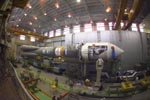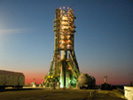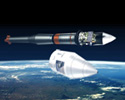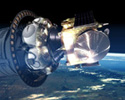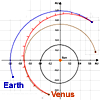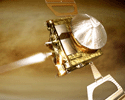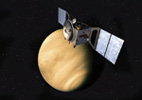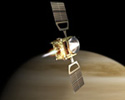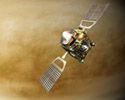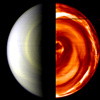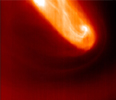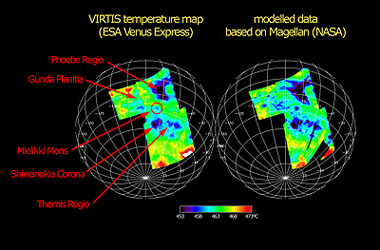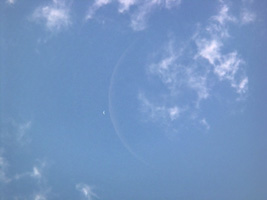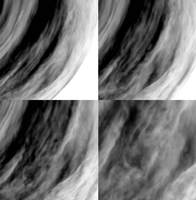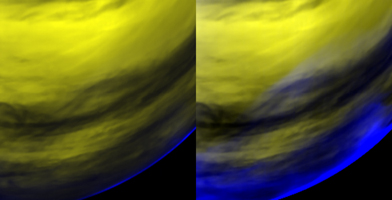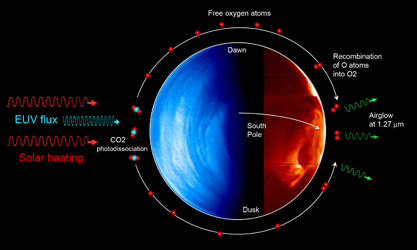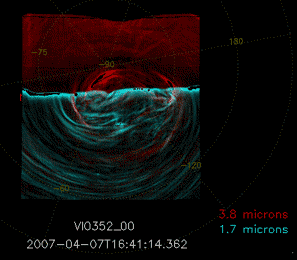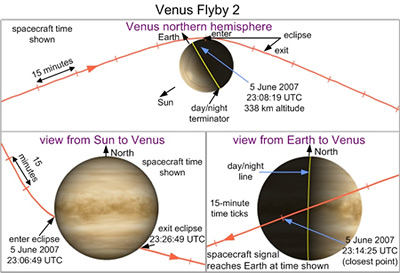 November 2005: Launchment November 2005: Launchment |
 January 2007: Venus and the Moon January 2007: Venus and the Moon |
 December 2005: On route to Venus December 2005: On route to Venus |
 February 2007: Venus Express mission extended February 2007: Venus Express mission extended |
 April 2006: Orbit insertion April 2006: Orbit insertion |
 April 2007: Venus' turbulent atmosphere April 2007: Venus' turbulent atmosphere |
 April 2006: First observations April 2006: First observations |
 April 2007: One year in Orbit April 2007: One year in Orbit |
 May 2006: In Venus orbit May 2006: In Venus orbit |
 May 2007: Venus Expres Movies May 2007: Venus Expres Movies |
 July 2006: First scientific results July 2006: First scientific results |
 June 2007: Venus Express and Messenger June 2007: Venus Express and Messenger |
 November 2006: Launchment anniversary November 2006: Launchment anniversary |
 October 2007: 500 days on Venus October 2007: 500 days on Venus |
 December 2006: Venus Express sees the surface of Venus December 2006: Venus Express sees the surface of Venus |
